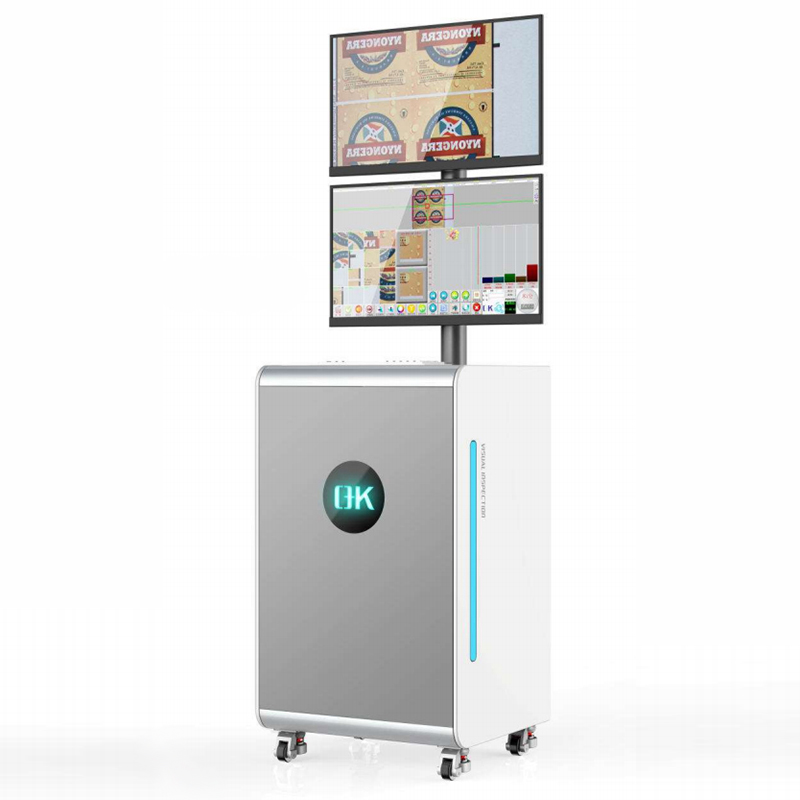In the printing industry, precision and accuracy are crucial for ensuring the quality of printed materials. Dimensional inspection, a key component of quality control, involves measuring and verifying the geometric attributes of printed materials, such as dimensions, alignment, and spacing. Advanced printing inspection systems play a pivotal role in automating this process, providing unparalleled accuracy, speed, and efficiency. This article explores the importance, methods, and advantages of dimensional inspection using modern printing inspection systems.

Importance of Dimensional Inspection in Printing
Dimensional inspection ensures that printed materials meet design specifications and customer requirements. It is vital in industries such as packaging, labels, textiles, and security printing, where precise dimensions are critical to functionality, aesthetics, or regulatory compliance. Key benefits of dimensional inspection include:
Quality Assurance: Ensures products meet high-quality standards, avoiding costly rejections or recalls.
Compliance: Verifies adherence to regulatory or industry-specific dimensional requirements.
Brand Integrity: Maintains consistency across products, protecting brand reputation.
Process Optimization: Identifies errors early in the production process, reducing waste and improving efficiency.
How Printing Inspection Systems Perform Dimensional Inspection
Advanced printing inspection systems use advanced technologies to conduct dimensional inspections with high accuracy. These systems can measure various parameters, such as dimensions, alignment, and tolerances, in real time. Key technologies include:
1 Vision Systems
High-resolution cameras capture images of printed materials, which are analyzed using sophisticated algorithms. These systems detect deviations in dimensions, spacing, and alignment with micron-level accuracy.
2 Laser Profiling
Laser-based systems generate 3D profiles of printed materials, allowing for precise measurement of dimensions and surface irregularities. This method is especially useful for embossed or textured prints.
3 Inline Inspection
Inline inspection systems are integrated directly into the production line, enabling real-time dimensional checks without halting the process. This minimizes downtime and ensures immediate detection of defects.
4 AI-Powered Analysis
Artificial intelligence (AI) enhances the capabilities of printing inspection systems by learning from historical data and recognizing complex patterns. AI-driven systems can identify subtle defects or trends that might be missed by traditional methods.

Parameters Assessed During Dimensional Inspection
Printing inspection systems evaluate several critical parameters to ensure dimensional accuracy:
Width and Length: Ensures the overall size of the printed material matches specifications.
Alignment: Checks the placement of text, images, and graphics against reference points.
Spacing: Verifies the uniformity of spacing between elements, such as text lines or graphic features.
Margins and Borders: Measures the distances between the content and edges to ensure proper alignment and aesthetics.
Tolerance Levels: Confirms that variations in dimensions remain within acceptable limits.
Applications of Dimensional Inspection
Dimensional inspection is used across various printing sectors, including:
1 Packaging
Ensures accurate dimensions of boxes, labels, and seals to prevent issues during assembly or use.
2 Labels
Verifies that label dimensions align with container sizes and regulatory requirements.
3 Security Printing
Checks the precise dimensions of features like watermarks, holograms, and microtext in currency, ID cards, and certificates.
4 Industrial Printing
Ensures the alignment and sizing of technical drawings or schematics used in engineering applications.
Advantages of Using Printing Inspection Systems
Modern printing inspection systems offer several advantages over manual inspection methods:
Accuracy: Automated web inspection systems for printing quality achieve higher precision than human inspectors.
Speed: Real-time inspections significantly increase productivity.
Consistency: Eliminates variations caused by human error.
Comprehensive Analysis: Provides detailed reports and data for quality assurance and process improvement.
Cost-Effectiveness: Reduces material waste and downtime caused by defective prints.

Challenges and Solutions
While printing inspection systems are highly effective, challenges such as system calibration, complex material types, and high initial investment can arise. These issues can be addressed through:
Regular Calibration: Ensures accuracy and reliability over time.
Advanced Software: Handles complex inspections, including curved or irregular surfaces.
Scalable Solutions: Offers customizable systems tailored to specific needs and budgets.
Future Trends in Dimensional Inspection
The future of dimensional inspection in the printing industry is driven by advancements in automation, artificial intelligence, and integration with Industry 4.0. Emerging trends include:
AI-Enhanced Systems: AI will further improve defect detection and predictive maintenance.
3D Printing Inspection: Systems designed to inspect 3D-printed materials with high precision.
Cloud-Based Analytics: Real-time data sharing and analytics for remote quality control.
In summary, dimensional inspection using printing inspection systems has become indispensable for ensuring the quality and precision of printed materials. By automating the inspection process and leveraging advanced technologies, these systems enhance productivity, reduce waste, and uphold high standards of quality. As printing technologies continue to evolve, dimensional inspection systems will play a pivotal role in meeting the growing demands for accuracy and efficiency in the printing industry.